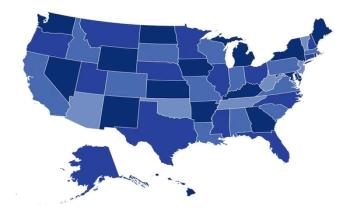
Atopic Dermatitis
Latest News

Latest Videos

CME Content
More News

Investigators of this study noted the need for more data on risks of malignancies among patients who have atopic dermatitis (AD), with the chronic skin condition already having significant associations with nonmelanoma skin cancer, lymphoma, keratinocyte carcinoma, and pancreatic and kidney cancers.

A meta-analysis and review of 9 randomized trials found high-quality evidence demonstrating the benefits of dupilumab in patients with severe atopic dermatitis.

A group of dermatologists and dermatology students studied why atopic dermatitis may be related to certain cardiovascular diseases, neuropsychiatric diseases, autoimmune diseases, and obesity.

Study results presented at this year’s American Academy of Allergy Asthma & Immunology annual meeting displayed dupilumab efficacy in children aged 6 months to 5 years who had atopic dermatitis (AD).

Investigators compared these outcomes due to limited research in the space, with previous surveys suggesting care disparities.

This study investigated the impact atopic dermatitis (AD) has on out-of-pocket (OOP) costs for caregivers of pediatric patients with the chronic skin condition.

This exploration of eczema self-management investigated the potential effectiveness of 2 online behavioral interventions, 1 each for young patients and their parents and/or caregivers.

The authors conducted a subanalysis of data on 100,000-plus children from 3 studies to estimate the global prevalence and severity of eczema; they used linear mixed models to do so.

With atopic dermatitis (AD) prevalence increasing around the world, primarily in developing countries, investigators evaluated the potential for pollution to have an impact on development of the chronic skin condition among an adult population.

A team of experts from the United States and Canada performed this systematic review, considering for the first time patient values and preferences for their atopic dermatitis (AD) care.

Following member surveys, expert interviews, and roundtable discussions, the American College of Allergy, Asthma, and Immunology (ACAAI) has released new recommendations for overcoming care disparities among those who have atopic dermatitis (AD) and food allergies.

Using data from the UK Biobank, potential correlations were investigated between excessive skin scarring outcomes arising from comorbidities among 230,000-plus European individuals.

The parents of pediatric patients who have atopic dermatitis experience stress just as their children do, and this study investigated how that stress manifests among the parents, comparing outcomes between mothers and fathers.

For 2 important reasons—that brain cancer is so aggressive and its risk may be elevated in the presence of certain allergies—investigators of a meta-analysis set out to investigate potential connections between eczema and various brain cancers.

With mixed findings from previous studies focused on atopic dermatitis and the use of cognitive behavioral therapy (CBT) as a treatment modality, investigators modified an existing online CBT intervention to account for the lack of clinical psychologists in the dermatological space.

This year’s most-read articles on atopic dermatitis (AD) examined AD as a risk factor for other neurological and attention-deficit conditions and efforts to improve the detection of other comorbid conditions associated with the common skin condition.

This study was prompted by recent findings that ultra-low IgE levels (IgE <2.5 kU/L) may be linked with a higher risk of cancers.

Adult patients with moderate-to-severe atopic dermatitis (AD) in the phase 3 BREEZE-AD7 study showed sustained improvement of AD signs and symptoms after 68 weeks with combination treatment of bariticitinib and topical corticosteroids.

Korean patients with allergic diseases, including atopic dermatitis (AD), allergic rhinitis (AR), and asthma, had a higher risk of cataract surgery, and the combination of AD and AR resulted in the highest risk.

Patients exposed to childhood maltreatment were at greater risk for developing atopic disease compared with unexposed counterparts, and risk of atopic dermatitis and allergic rhinoconjunctivitis may have been attentuated by misdiagnosis.

Matthew Zirwas, MD, FAAD, associate professor of dermatology at Ohio University in Athens, Ohio provides updates on treatment options for AD at the 2022 SDPA Fall Conference.

Early life exposure to antibiotics, particularly during weeks 2, 3, and 4 of life, was associated with a decreased risk of atopic dermatitis development.

Jason Ezra Hawkes, MD, MS, FAAD, board-certified dermatologist and associate professor of dermatology at the University of California Davis in Sacramento, spoke on how clinical studies in atopic dermatitis (AD) are increasingly investigating topics that remain unknown for disease management, including primary vs secondary failures and AD pathophysiology across different ethnic groups.

Urban-living Indigenous children and young people in high-income countries reported a higher likelihood of current and severe symptoms of atopic dermatitis (AD) compared with a non-Indigenous population, as well as a higher incidence of bacterial skin infections.

Pimecrolimus and tacrolimus, 2 topical calcineurin inhibitors for the treatment of atopic dermatitis (AD), were not shown to increase the risk of cancer based on moderate-certainty evidence from a systematic review and meta-analysis.
















































